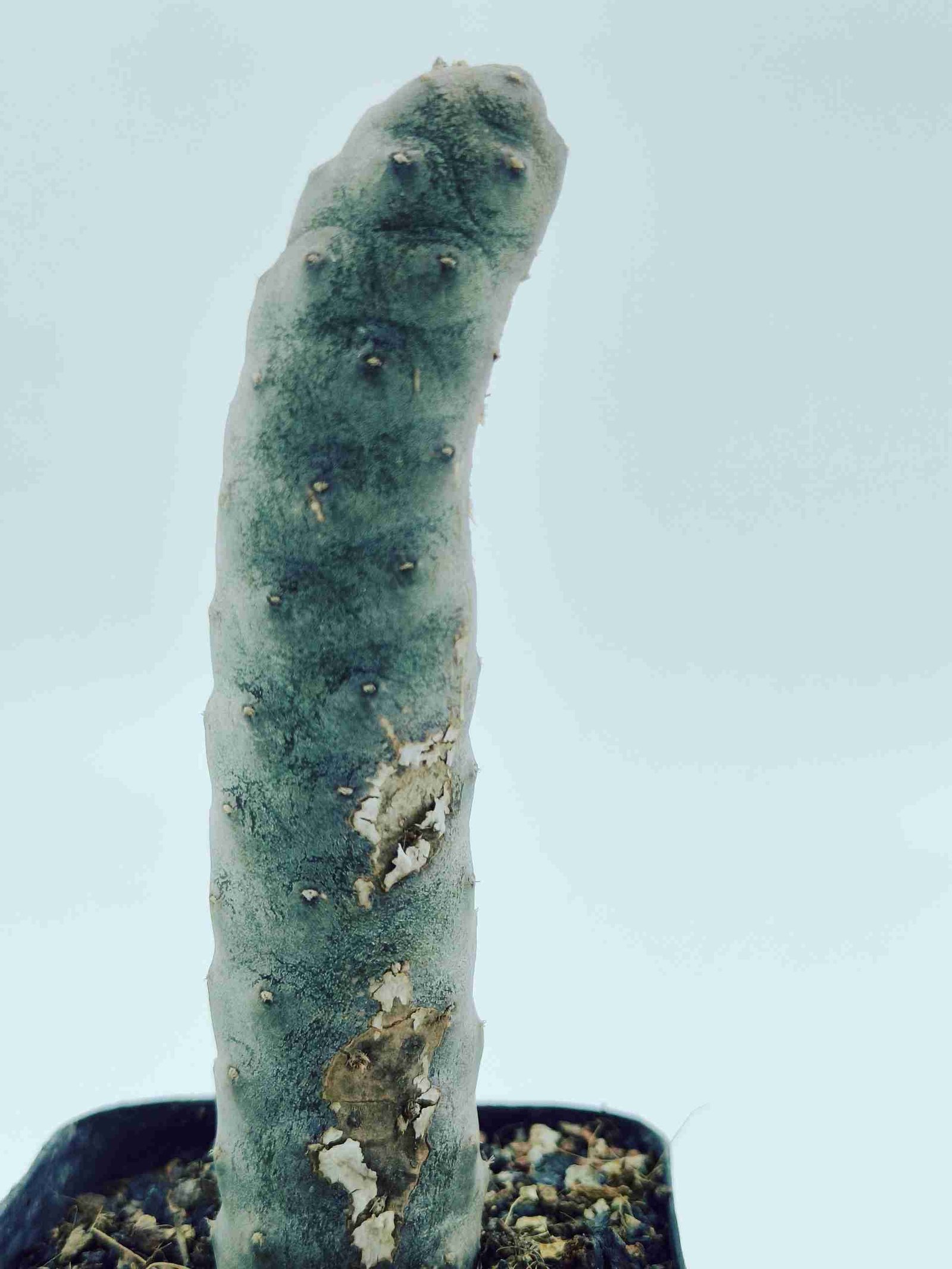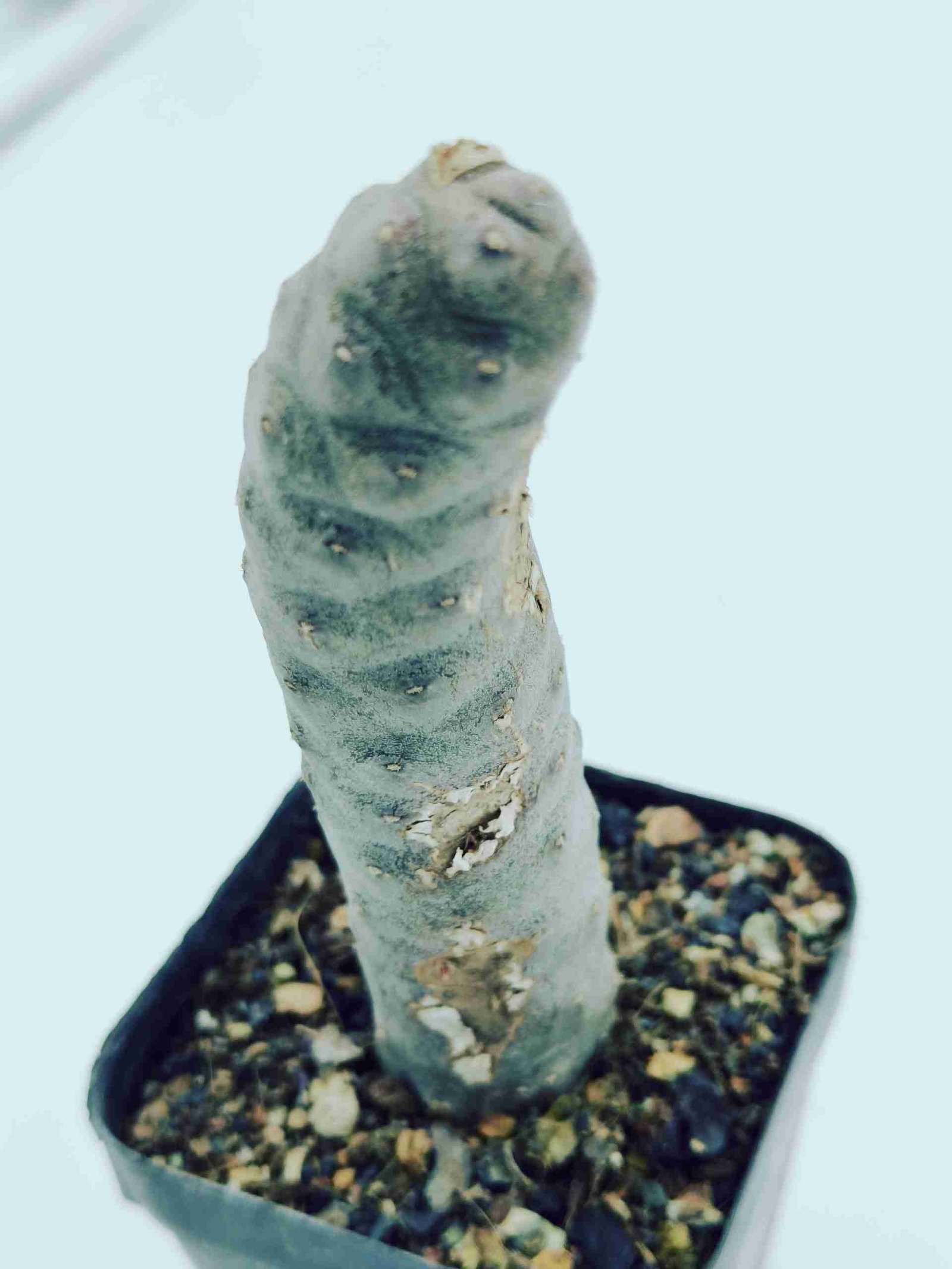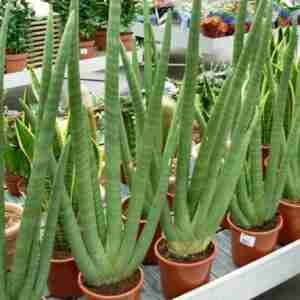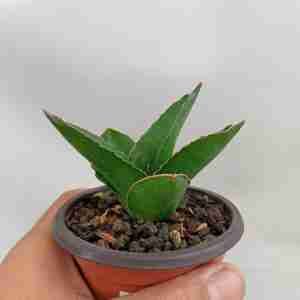Tephrocactus articulatus var. inermis, commonly known as Paper Spine Cactus or Pine Cone Cactus, is a unique and intriguing member of the cactus family. Unlike many other cacti, it lacks spines, giving it a distinct, smooth appearance. Its segmented, cone-like stems give it the appearance of stacked pinecones, adding to its ornamental appeal.
Key Characteristics:
- Scientific Name: Tephrocactus articulatus var. inermis
- Common Names: Paper Spine Cactus, Pine Cone Cactus, Tephrocactus Inermis
- Family: Cactaceae
- Type: Perennial cactus, succulent
Appearance:
- Shape:
- Tephrocactus articulatus var. inermis grows in a segmented, modular form, with individual sections that resemble pinecones. These segments stack on top of each other, creating a columnar or branching appearance that can grow up to 12 inches (30 cm) tall.
- Stems:
- The stems are pale green to grayish-green and have a distinct, cone-like texture. Unlike other varieties of Tephrocactus articulatus, the inermis form lacks the large spines, giving the plant a smooth and softer appearance.
- Growth Habit:
- This cactus grows in a segmented manner, with each segment easily detaching if handled roughly or disturbed. Over time, it can form clumps as new segments grow from the base of the plant or around the detached sections.
Flowers:
- Blooming:
- Tephrocactus articulatus var. inermis produces beautiful, small white or light pink flowers at the tips of its segments. These blooms typically appear in spring or early summer and can add a soft contrast to the plant\’s bold, architectural form.
Growing Conditions:
- Light:
- This cactus thrives in bright, direct sunlight. It is best grown in full sun to partial shade, particularly indoors near a sunny window. Outdoors, it prefers a sunny, dry location.
- Soil:
- Like most cacti, Tephrocactus articulatus var. inermis requires well-draining soil. A cactus or succulent mix is ideal, or you can create your own by mixing regular potting soil with sand or perlite to enhance drainage.
- Watering:
- This plant requires minimal watering, especially in the cooler months. Allow the soil to dry out completely between waterings to avoid root rot. During the growing season (spring and summer), water moderately, but reduce watering significantly in the fall and winter.
- Temperature:
- Tephrocactus articulatus var. inermis prefers warm temperatures between 65-85°F (18-29°C). It can tolerate occasional cooler temperatures, but should be protected from frost, as it is not frost-hardy.
- Humidity:
- This cactus thrives in dry environments and does not require high humidity. It can adapt well to indoor conditions with low to moderate humidity levels.
Care and Maintenance:
- Fertilization:
- Fertilize sparingly during the growing season with a diluted cactus or succulent fertilizer. Feeding once a month in spring and summer is sufficient. Avoid fertilizing during the dormant winter months.
- Pruning:
- Pruning is unnecessary for this plant, but you can remove any dead or damaged segments. Be cautious when handling, as the segments can easily detach from the plant.
- Propagation:
- Propagation is simple due to the plant\’s segmented growth habit. Detached segments can be left to callous for a few days before planting them in well-draining soil. They will root and grow into new plants with minimal effort.
Special Considerations:
- Handling:
- Although this variety lacks spines, its segments are fragile and can easily detach if handled roughly. Be careful when moving or repotting the plant.
- Pest Resistance:
- Tephrocactus articulatus var. inermis is generally resistant to most pests but may occasionally attract mealybugs or spider mites. Regular inspection and prompt treatment with neem oil or insecticidal soap can prevent infestations.
Aesthetic and Ornamental Value:
- Indoor Plant: Its compact size and unique, segmented appearance make this cactus an excellent choice for indoor spaces, such as windowsills, tabletops, or succulent arrangements. Its architectural shape adds interest and texture to any plant collection.
- Outdoor Plant: In warmer climates (zones 9-11), this cactus can be grown outdoors in rock gardens, succulent beds, or containers. It thrives in dry, arid conditions and is well-suited for xeriscaping or low-water-use landscapes.









Reviews
There are no reviews yet.